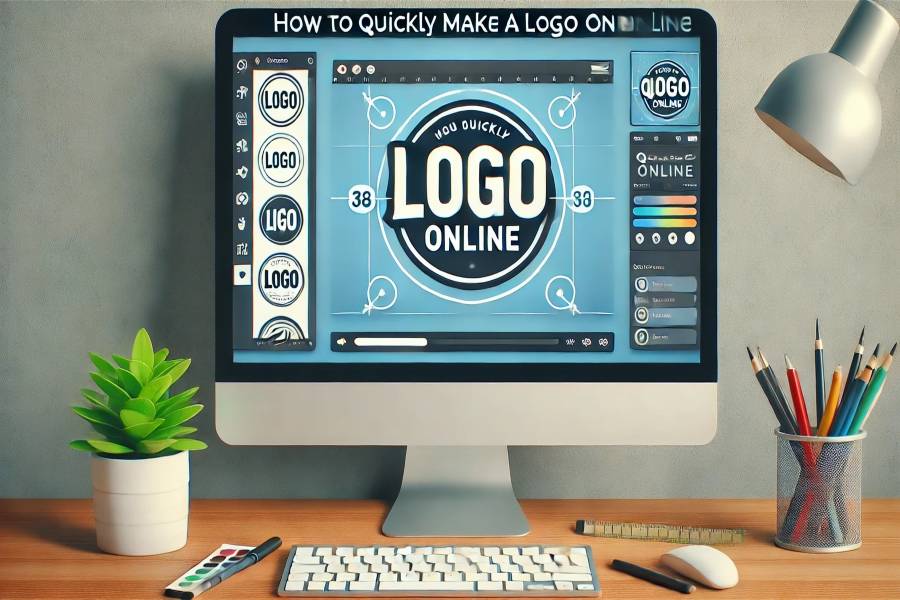In today’s digital age, a logo is more than just a pretty picture, it’s the face of your brand. Whether you’re launching a new business, starting a blog, or just looking to refresh your current branding, a well-designed logo can set the tone for how people perceive your venture. It represents your brand’s identity, sets you apart from competitors, and builds trust with your audience. A logo is often the first thing people notice about your brand, and first impressions matter. So, how can you quickly create a logo that effectively communicates who you are? That’s what we’ll explore in this guide.
If you’re looking to create a professional logo quickly and easily, consider this option which offers a variety of customization tools to bring your vision to life.
This article is brought to you by the specialists at Turbologo, a leading company in online logo design. Our team has years of experience helping brands create logos that leave a lasting impression. Let’s dive into the steps you need to follow to create a logo online quickly and efficiently.
First Steps: Defining the Concept
Before diving into the actual design process, take a moment to think about what your logo should represent. A good logo reflects the essence of your brand. Ask yourself some key questions: What values does your brand stand for? Who is your target audience? What emotions do you want your logo to evoke?
Consider how you want your brand to be perceived. For instance, a law firm may want a logo that looks professional and trustworthy, while a children’s toy brand might aim for something fun and playful. Your logo should tell your brand’s story at a glance.
Once you have a clear concept in mind, it will be easier to make design choices that align with your brand’s identity.
Choosing the Style and Color Palette
Next, it’s time to think about the overall style of your logo. Do you want something modern and sleek, or are you aiming for a more classic and timeless look? The style you choose will set the tone for your entire brand.
After settling on a style, consider the colours that will best represent your brand. Colours are powerful—they can influence mood and convey different messages. For example, blue often conveys trust and professionalism, while red can evoke energy and passion. Choose a colour palette that aligns with your brand’s personality.
It’s also important to think about how your color choices will look in different formats. Make sure your logo is versatile enough to work in both color and black-and-white.
When it comes to designing your logo, selecting the right style and color palette is crucial. But you don’t have to do it alone. Using an online logo maker like Turbologo can simplify this process significantly. Make a logo online easily with a variety of customizable templates, which allow you to experiment with different styles and colors until you find the perfect match for your brand. These tools are designed to be user-friendly, even if you have no prior design experience. With features like AI-generated suggestions, drag-and-drop functionality, and a vast library of icons and fonts, an online logo maker provides everything you need to create a professional logo in minutes. Plus, you can preview how your logo will look in various contexts, ensuring it’s both stylish and versatile.
Creating the Basic Shape of the Logo
Now that you have your concept, style, and colors in mind, it’s time to start designing. The basic shape of your logo is the foundation upon which everything else will be built. This shape could be anything from a simple circle or square to a more complex form.
When creating the basic shape, keep in mind the principle of simplicity. A complex design can be difficult to reproduce and may not look good at smaller sizes. A simple, clean shape will be more memorable and versatile.
You can experiment with different shapes and layouts until you find one that feels right for your brand. Remember, your logo should be easily recognizable and unique.
Adding Text: How to Choose the Right Font
The next step is to add text to your logo, usually in the form of your company’s name or a tagline. The font you choose is just as important as the logo’s shape and colours. The right font can enhance your logo’s message, while the wrong one can confuse your audience.
When choosing a font, consider its readability and how well it matches the overall style of your logo. Serif fonts, for example, often convey a sense of tradition and reliability, while sans-serif fonts tend to look more modern and clean. Make sure your font is legible at all sizes, from a large billboard to a tiny business card.
You might also want to customize the font or add effects like bolding, italicizing, or shadowing to make your text stand out.
Icons and Graphics: How to Enhance Your Logo
To give your logo more depth and personality, consider incorporating icons or graphics. These elements can help convey what your brand is about in a more visual way. For example, a coffee shop might include a coffee cup icon in its logo, while a tech company might use a circuit board pattern.
When adding icons or graphics, ensure they complement the rest of your design rather than overpowering it. The key is to strike a balance between text, shapes, and icons, so everything works together harmoniously.
Icons and graphics can also help make your logo more versatile. For instance, a standalone icon could be used as a favicon for your website or as a watermark on social media images.
Adjusting and Balancing Elements
Once all the elements of your logo are in place, it’s time to fine-tune the design. This step is crucial to ensure that your logo looks polished and professional. Start by checking the spacing between elements—are they too close together or too far apart? Adjust the size of each component so that nothing looks too dominant or too small.
Consider how the elements align with each other. A well-balanced logo has all its parts in harmony. You might need to adjust the position of your text, icons, or shapes to achieve the perfect balance.
Take your time with this step. It’s the final touch that can take your logo from good to great.
Checking for Versatility: Different Sizes and Formats
Your logo needs to look good everywhere, whether it’s on a large banner, a mobile app, or a business card. Versatility is key. Test your logo at different sizes to see how it holds up. Does it remain legible and recognizable when scaled down? Does it still look crisp when blown up?
Additionally, consider how your logo will look in different formats, such as on printed materials, digital screens, or merchandise. Make sure it works well in various colour schemes, including black-and-white, grayscale, and inverted colours.
Final Adjustments: The Last Touches
You’re almost there! Before finalizing your logo, make any last adjustments. This is your chance to add those final touches that will make your logo truly unique. Maybe it’s a small detail in the icon or a slight tweak to the font spacing.
Check your logo against your original concept. Does it communicate the right message? Is it visually appealing? If everything looks good, you’re ready to move forward.
Conclusion: How to Save and Use Your Logo
Congratulations! You’ve created a logo that represents your brand. Now it’s time to save your logo in the appropriate formats. Typically, you’ll want to save it as a vector file (such as an SVG or EPS) so it can be resized without losing quality. You should also have raster versions (like PNG or JPG) for use on websites and social media.
Think about where you’ll use your logo. On your website? Business cards? Social media? Make sure your logo is accessible and ready to be used across all your branding materials.
By following these steps, you’ve created a logo that is not only visually appealing but also communicates your brand’s identity clearly and effectively. Whether you’re a start-up, a small business, or just looking to refresh your brand, a great logo is within reach—quickly and efficiently.












































Leave a Reply